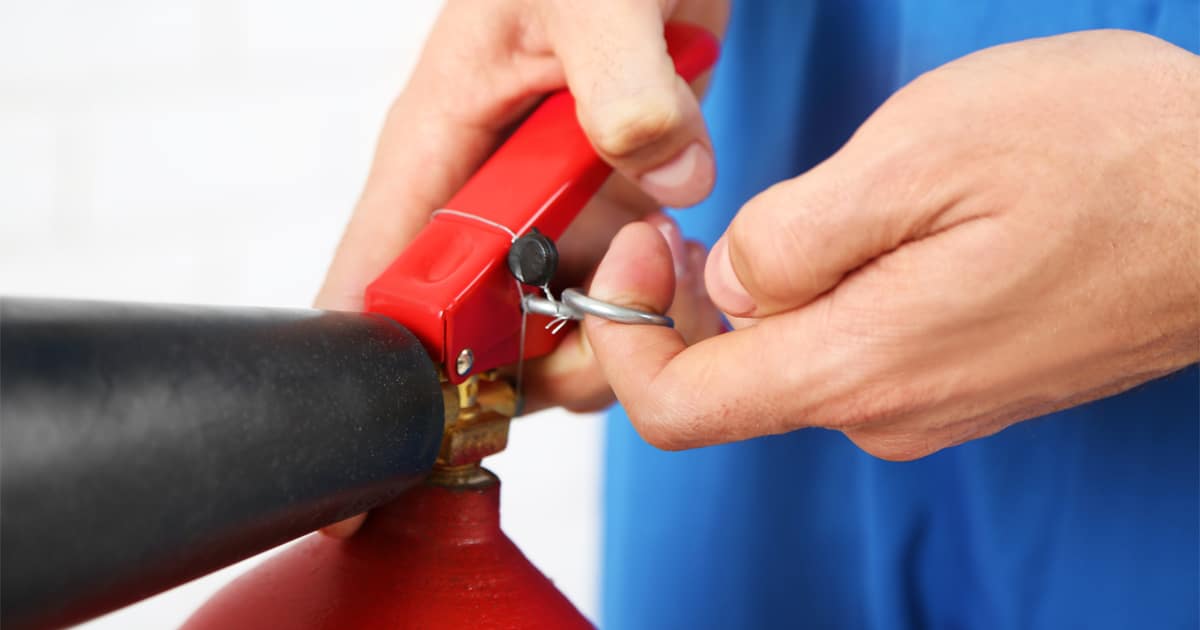Instructions
Even if the instructions are illustrated on the cylinder of the extinguisher, it is not a wise idea to start reading them when you have an open fire on your hands. Here are the instructions you should follow step by step, and you just have to remember PASS.

The First Step: Pulling The Safety Pin
The content of any fire extinguisher is pressurized, so it is very important to handle the device with care to avoid any accidents. Keep the cylinder upright and pull the safety pin. The safety pin ensures that the content remains pressurized; once it is taken out, you will be able to activate the extinguisher and use it to stop the fire.
The Second Step: Aiming The Nozzle Against The Fire Source
Once the safety pin is out, aim the nozzle against the source of the flames.
The Third Step: Squeezing The Handle
Even with the safety pin out, the content will not simply be pushed out. The dry powder inside will not turn into foam and kill the fire just yet. You will need to squeeze the handle, to push the content out for it to do its job. For instance, if a fire breaks in your car, because of faulty electrical systems, using a CO2 extinguisher is the most recommended. The gas will replace all the oxygen, killing the fire instantly.
The Forth Step: Sweeping Over The Source Of The Flames
To make sure that the fire is completely put out, you need to use a sweeping motion over the source of the flames. A portable fire extinguisher is quite handy when you need to stop a fire when water is not a good solution.
To Summarize
If you are still new to fire safety regulations and how to use products geared towards stopping fires, you need to learn exactly how to use a fire extinguisher as this is one of the most common devices you will find everywhere.
Any fire extinguisher has a label on it. Depending on the type of fire class you need to extinguish, you need to use an appropriate type of extinguisher. For instance, electrical systems caught on fire must be extinguished with a CO2 extinguisher, while most common fires should be put out by regular ABC dry powder extinguishers.
Remember that emergency services may sometimes be too late and it is up to you to stop the fire and manage the damage that may occur.
Keep safe and be prepared for emergencies.
